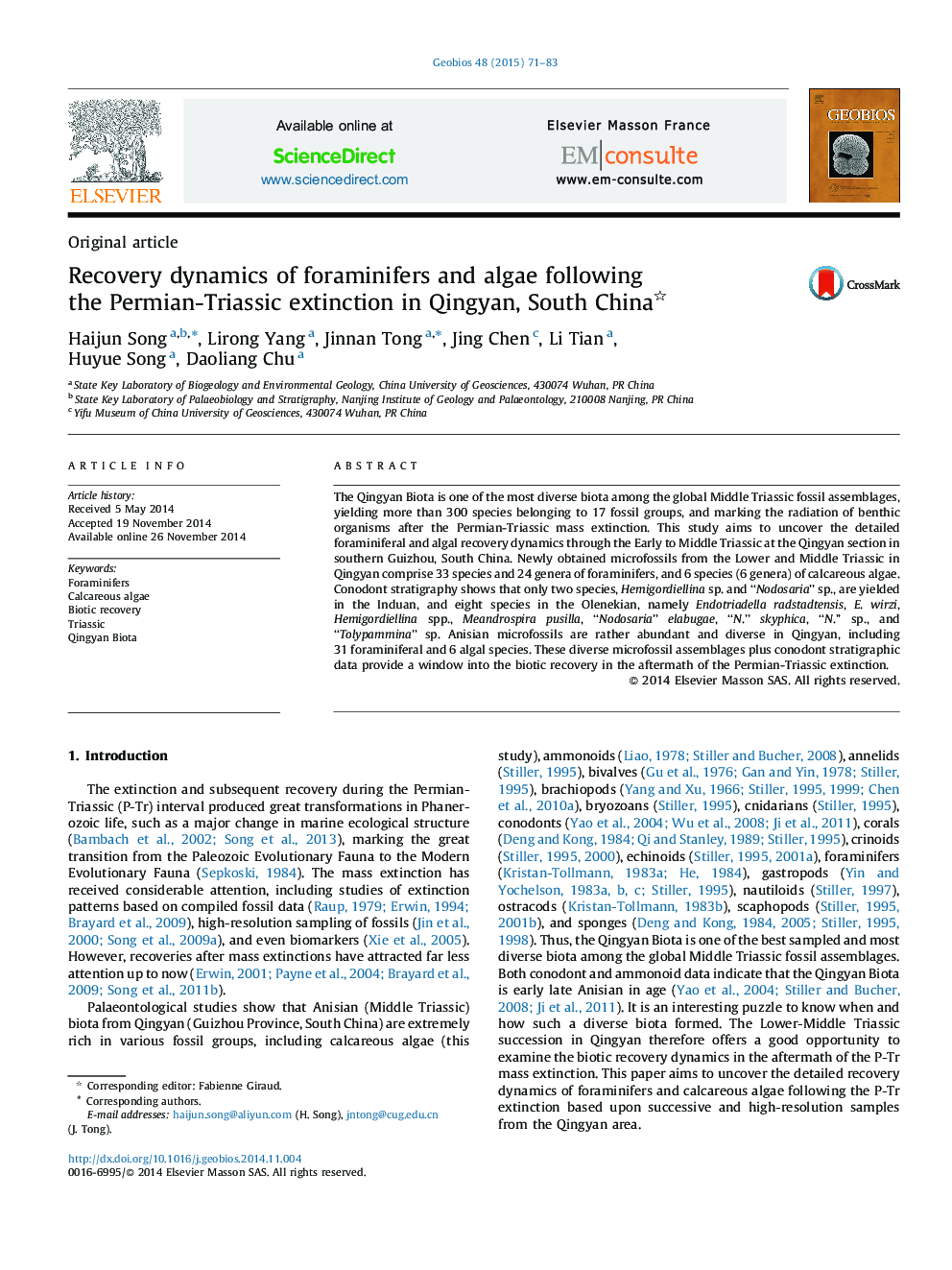| کد مقاله | کد نشریه | سال انتشار | مقاله انگلیسی | نسخه تمام متن |
|---|---|---|---|---|
| 4748011 | 1360072 | 2015 | 13 صفحه PDF | دانلود رایگان |

The Qingyan Biota is one of the most diverse biota among the global Middle Triassic fossil assemblages, yielding more than 300 species belonging to 17 fossil groups, and marking the radiation of benthic organisms after the Permian-Triassic mass extinction. This study aims to uncover the detailed foraminiferal and algal recovery dynamics through the Early to Middle Triassic at the Qingyan section in southern Guizhou, South China. Newly obtained microfossils from the Lower and Middle Triassic in Qingyan comprise 33 species and 24 genera of foraminifers, and 6 species (6 genera) of calcareous algae. Conodont stratigraphy shows that only two species, Hemigordiellina sp. and “Nodosaria” sp., are yielded in the Induan, and eight species in the Olenekian, namely Endotriadella radstadtensis, E. wirzi, Hemigordiellina spp., Meandrospira pusilla, “Nodosaria” elabugae, “N.” skyphica, “N.” sp., and “Tolypammina” sp. Anisian microfossils are rather abundant and diverse in Qingyan, including 31 foraminiferal and 6 algal species. These diverse microfossil assemblages plus conodont stratigraphic data provide a window into the biotic recovery in the aftermath of the Permian-Triassic extinction.
Journal: Geobios - Volume 48, Issue 1, January–February 2015, Pages 71–83